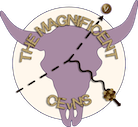Speaker
Description
The capability to perform precision measurements of nuclear form factors or coupling constants with CEνNS relies on a precise knowledge of the incoming neutrino flux and spectrum. Isotopes decaying via electron capture (EC) represent a close-to-ideal neutrino source, thanks to the monoenergetic spectrum and the possibility of precisely measuring the source activity. However, the low energy of emitted neutrinos would require detectors with a trigger threshold at the eV level.
Lithium is the only target material that could practically be used to detect EC neutrinos, at the cost of a poor event rate due to the low neutron content. First, lithium’s low nuclear mass would relax the threshold requirement up to 50 eV. Second, several lithium-containing crystals are commercially available and could be used as bolometers. Third, lithium can easily be enriched to 99% in 6Li or 7Li, allowing to perform a differential measurement of the neutrino flux and to disentangle the vector and axial-vector components of CEνNS.
In this contribution, we will present the requirements for a hypothetical lithium-based bolometric experiment and its sensitivity to CEνNS. In addition, we will discuss the possibility to exploit such an experiment for a truly independent cross-check of the Gallium neutrino anomaly.
